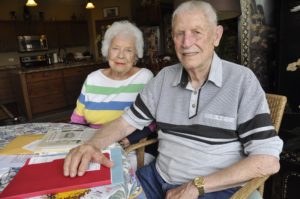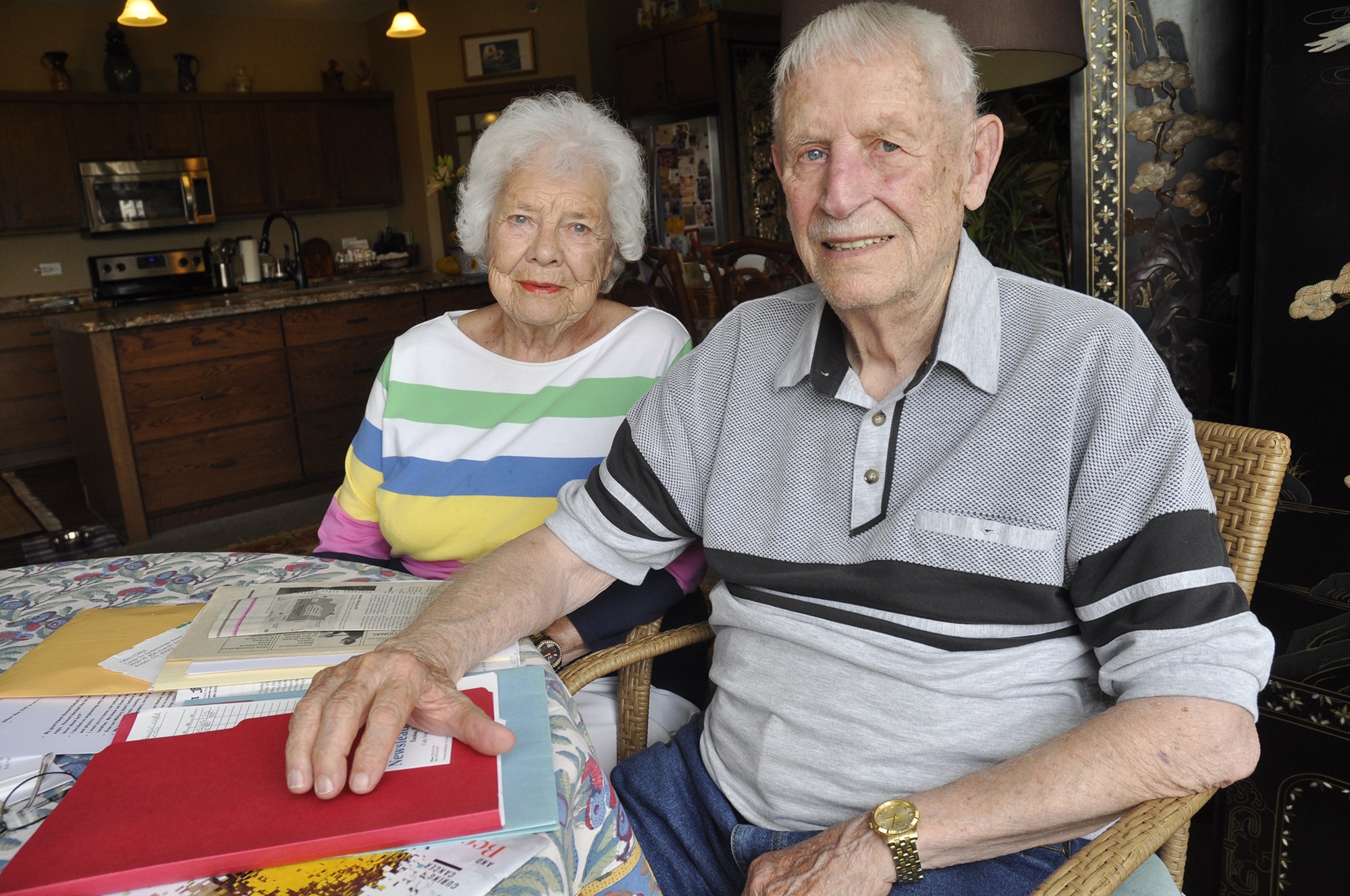by Mike Knaak
editor@thenewsleaders.com
Wilbur Wright solves puzzles and problems. His challenges include fixing failed rockets in Brazil, coaxing more milk out of cows in Portugal and helping companies get off the ground in Russia after the collapse of the Soviet Union.
His career of problem-solving started with a bang. He was one of the scientists who designed and built the first atomic bomb.
Wright, who lives in Sartell with his wife, turned 96 on June 9.
In 1944, he was a student at the University of Colorado in Boulder. He was studying mechanical engineering with a heavy dose of physics and “I took all the mathematics one could take,” Wilbur said.
He was selected with a number of other young engineers to help build the bomb and worked at Manhattan Project sites around the country including Los Alamos, N.M., and Hanford, Wash.
Wright’s job was to figure out how to handle plutonium and machine it at high tolerances to a shape needed for a bomb.
“I was young and I thought it was just great to be doing something that was involved with the country,” Wilbur said.
“It’s important to remember even if we were positive and looking forward as a nation, no one, no one, knew if we were really going to win this war,” Wright wrote while recording his memories of the time. “It was a desperate time and, with big decisions to be made in a very short time.”
When the United States dropped the first bomb on Japan, Wright was on a plane heading for Hawaii when he heard the news on the radio.
“I wasn’t too surprised, but I had no idea when it would be dropped,” Wright said.
After leaving the Navy in 1946, Wright worked for the Bureau of Reclamation, General Electric and Dow Chemical.
He continued to work on nuclear projects including power supplies and designing plants to make bomb parts.
In the 1950s, he managed a Dow Chemical plant outside Denver. Local newspaper clippings from the time vaguely described the plant’s work as making precision equipment for the aerospace and scientific industries. Behind the shield of Cold War secrecy, the plant’s engineers worked with plutonium and built triggers for atomic weapons.
While living in Colorado, Wilbur’s first wife, Betty, became best friends with Elinor Detra, a teacher. Elinor and her husband moved to St. Cloud where he worked as administrator at St. Cloud State University. Elinor’s husband died in 1968.
Meanwhile in Colorado, Betty died after a battle with cancer.
Thanks to some matchmaking by Wilbur’s brother, Wilbur and Elinor reunited. They carried on a long-distance romance with Wilbur flying from Denver to Minneapolis on weekends.
The two finally married in 1977 and settled in central Minnesota. Elinor taught speech at St. Cloud State until her retirement.
When Wilbur retired, he was far from done with puzzles. At a Rotary meeting, a friend told him about International Executive Service Corps, an organization that provides business talent to help countries improve their standard of living and economy.
For his first mission, the IESC sent Wright to Brazil, to help with the country’s rocketry program.
“The plant I was assigned to blew up about nine months before I got there,” Wright said.
“In about two months, we had real good rockets,” Wright said.
After a short time at home, Wilbur and Elinor were off to Portugal, where he tackled a more low-tech problem – the cows weren’t producing enough milk. He consulted a friend from Boulder with a herd of cows.
Other projects included hamburger that wouldn’t stick together (add water and fat) and growing shrimp.
“He’s good at putting together the right people,” Elinor said.
The couple’s last assignment was in Russia in the early 1990s. Wilbur’s job was to contact big companies and find out how IESC’s team could help them develop.
Wilbur said, “If a person is an organizer, he can take any subject and organize it to completion.”

Wilbur and Elinor Wright in their Sartell home.




